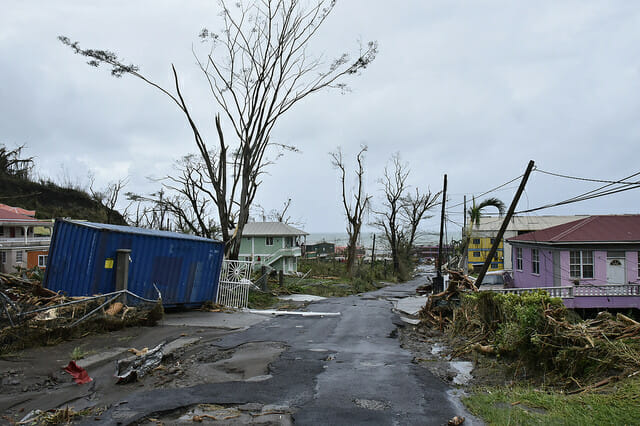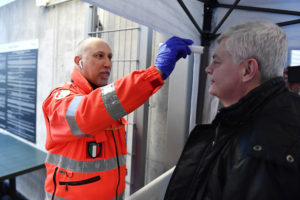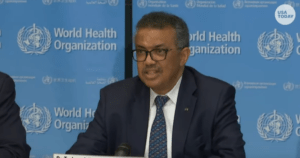Harvard Study: Hurricane Maria Death Toll 4,645, Not 64
Delayed medical care and poor infrastructure in Puerto Rico led to the deaths of thousands more than was officially reported, the study finds. The morning after Category 4 Hurricane Maria hit Puerto Rico in September. (Roosevelt Skerrit / Flickr Creative Commons)
The morning after Category 4 Hurricane Maria hit Puerto Rico in September. (Roosevelt Skerrit / Flickr Creative Commons)
Hurricane Maria hit Puerto Rico on Sept. 20, drenching the island with six months’ worth of rain in four days and pummeling it with strong winds, landslides and avalanches that erased roads, took out power lines and even buried people alive. Eight months later, the government’s official death toll from the hurricane stands at 64, but a new study from Harvard University suggests it’s closer to 4,645.
The official toll, the study says, does not count the thousands of people who died not from the direct impact of the storm but from delayed medical care, particularly for the elderly and chronically ill.
“About 15 percent of the people interviewed,” The New York Times writes, “reported that someone in their household was unable to get medicines for at least a day after the storm. Roughly 10 percent said that a household member had trouble using breathing equipment, which often relies on electricity.”
Compounding the problem, some “reported closed medical facilities and 6 percent said doctors were unavailable.”
The study, which was published in the New England Journal of Medicine, was conducted by scientists with Harvard’s T.H. Chan School of Public Health and Beth Israel Deaconess Medical Center.
This latest study isn’t the first to challenge the U.S. government’s findings. In December, The New York Times analyzed death statistics and found “1,052 more people than usual died across the island in the 42 days after the storm.”
In addition, the Times notes, “Puerto Rico’s Center for Investigative Journalism and CNN, and Alexis Raúl Santos, a demographer at Penn State, have also challenged the government’s figure, finding evidence for hundreds of excess deaths in the weeks following the hurricane.”
The Harvard survey, however, is the most comprehensive, with over 3,000 households surveyed across the island. Researchers then compared the post-Maria death rate to that of the previous year and found that the mortality rate was 14.3 deaths per 1,000 residents from Sept. 20 through Dec. 31, 2017, a 62 percent increase compared with 2016, or 4,645 “excess deaths.”
The Trump administration, under pressure after initial criticism of its death count, commissioned the Milken Institute School of Public Health at George Washington University in December to conduct a revised tally of Hurricane Maria deaths. “They’re still acquiring data,” Dr. Lynn R. Goldman, the school’s dean, told the Times.
Meanwhile in Puerto Rico, eight months after the storm, the situation is little improved. As The Washington Post reports:
The island’s slow recovery has been marked by a persistent lack of water, a faltering power grid and a lack of essential services — all of which have imperiled the lives of many residents who have been struggling to get back on their feet, especially the infirm and those in remote areas, some of which were the hardest hit in September.
George Washington University says its review will be completed this summer.
Your support matters…Independent journalism is under threat and overshadowed by heavily funded mainstream media.
You can help level the playing field. Become a member.
Your tax-deductible contribution keeps us digging beneath the headlines to give you thought-provoking, investigative reporting and analysis that unearths what's really happening- without compromise.
Give today to support our courageous, independent journalists.




You need to be a supporter to comment.
There are currently no responses to this article.
Be the first to respond.